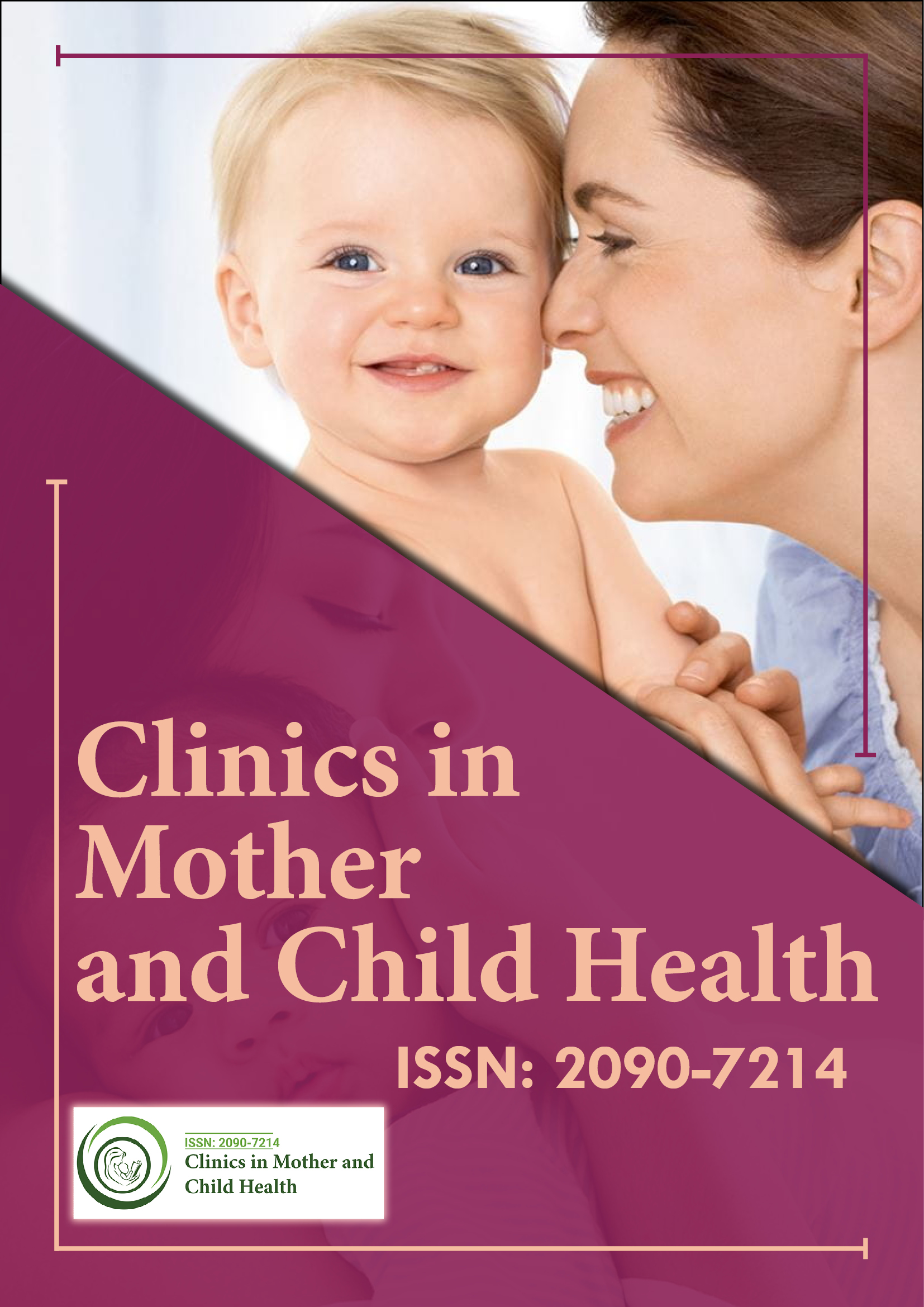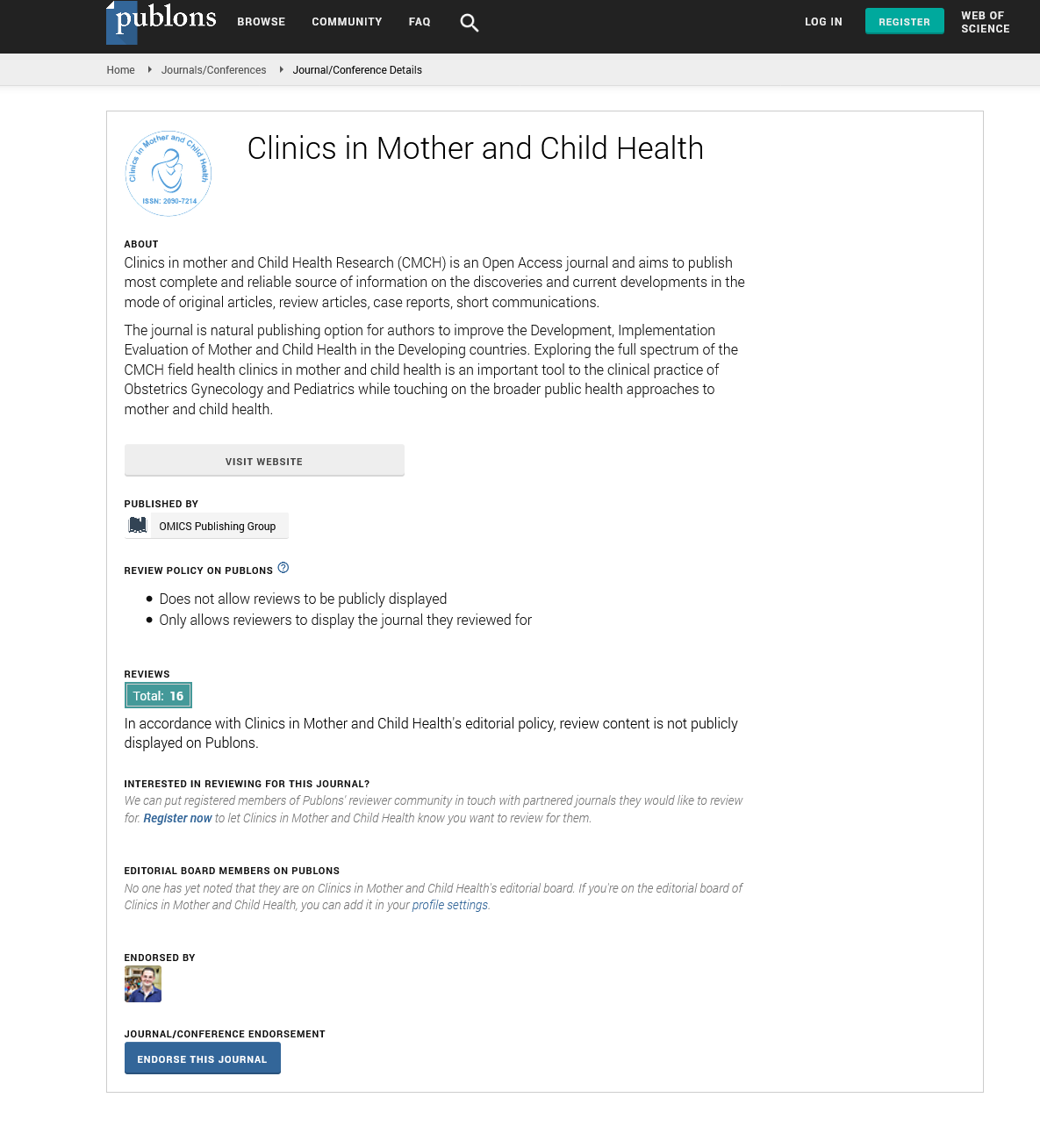Indexed In
- Genamics JournalSeek
- RefSeek
- Hamdard University
- EBSCO A-Z
- Publons
- Geneva Foundation for Medical Education and Research
- Euro Pub
- Google Scholar
Useful Links
Share This Page
Journal Flyer

Open Access Journals
- Agri and Aquaculture
- Biochemistry
- Bioinformatics & Systems Biology
- Business & Management
- Chemistry
- Clinical Sciences
- Engineering
- Food & Nutrition
- General Science
- Genetics & Molecular Biology
- Immunology & Microbiology
- Medical Sciences
- Neuroscience & Psychology
- Nursing & Health Care
- Pharmaceutical Sciences
Opinion Article - (2025) Volume 22, Issue 7
Child Protection and Maternal Health Clinics in São Tomé and PrÃncipe
Maria dos Santos*Received: 01-Jul-2025, Manuscript No. CMCH-25-30098; Editor assigned: 03-Jul-2025, Pre QC No. CMCH-25-30098; Reviewed: 16-Jul-2025, QC No. CMCH-25-30098; Revised: 21-Jul-2025, Manuscript No. CMCH-25-30098; Published: 28-Jul-2025, DOI: 10.35248/2090-7214.25.22.536
Description
In São Tomé and Príncipe, a small island nation off the western coast of Central Africa, maternal and child healthcare services are primarily delivered through a network of modest clinics dispersed across its two main islands and surrounding islets. These clinics serve as essential healthcare access points for mothers and children, especially in remote communities. Pregnant women receive routine prenatal care including blood pressure monitoring, urine testing, anemia screening, and tetanus vaccinations. After childbirth, the clinics take on the responsibility of tracking a child’s growth, managing nutritional needs, providing immunizations, and treating common childhood illnesses. Midwives are central to maternal care and are often the primary professionals overseeing normal deliveries. In cases of complications, nurses step in to offer additional support. However, specialist support remains limited at the local level. The country’s geography, with scattered villages separated by ocean channels, presents significant logistical challenges. Many communities can only be reached by canoe or small boats, making travel to health facilities slow and, at times, treacherous. During bad weather especially in rainy or stormy seasons travel can become dangerous or entirely impossible. This often results in pregnant women missing scheduled check-ups or delaying clinic visits, even when experiencing warning signs of complications. In some cases, women are forced to give birth at home due to the inaccessibility of health services.
The physical condition of many clinics is basic and underresourced. Some are built with rudimentary materials such as wood or mud and may lack solid flooring. Electricity is not always available, posing a significant obstacle to the refrigeration of vaccines, which is critical for preserving their effectiveness. The availability of clean water is inconsistent, further complicating sanitation and hygiene practices within health facilities. Clinics often lack essential medical equipment such as infant weighing scales, hemoglobin testing kits, or sterilization tools. Staff training opportunities are infrequent, primarily due to the high cost of logistics and a shortage of qualified trainers who can travel to remote areas. Cultural beliefs and traditional practices also influence how healthcare services are accessed and perceived. Some mothers attribute pregnancy complications or infant illnesses to spiritual causes rather than medical ones. Traditional birth practices remain widely accepted, and many women continue to consult local herbalists or rely on family elders for guidance between clinic visits. Fear of hospitals either due to their distance, the high cost of services, or unfamiliar environments can also discourage women from accepting referrals for specialized care when complications arise.
Despite these barriers, a number of innovative local strategies have emerged to address service gaps and strengthen community trust in formal healthcare. In maritime areas, "floating clinic days" have proven effective. On these days, healthcare teams travel by boat to isolated communities to provide essential maternal and child health services such as prenatal consultations, immunizations, child growth assessments, and group education sessions. Local volunteers play a key role in preparing boats, mobilizing communities, and informing families about the clinic's arrival. Community engagement is also fostered through informal health education sessions held under trees or in communal buildings. These group meetings offer mothers an opportunity to learn and share experiences related to feeding practices, hygiene, rest during pregnancy, and infant care. Such gatherings help demystify medical services, reduce fear or stigma around clinic visits, and build a supportive network among women. Community health agents are instrumental in these outreach efforts, often reminding women about clinic days and helping coordinate transportation, sometimes using community-funded boats or canoes.
Professional development for healthcare staff is another priority. Nurses and midwives occasionally receive training through workshops conducted by visiting specialists, covering skills such as emergency obstetric care and neonatal resuscitation. As staff capabilities improve, maternal and infant mortality rates show signs of decline. Clinics are also becoming more proactive in identifying high-risk pregnancies early on and facilitating referrals to better-equipped hospitals located on the main island. Where these local interventions are implemented consistently, health outcomes show measurable improvement. More pregnant women begin prenatal care earlier, fewer children suffer from preventable diseases, malnutrition rates decline, and a greater number of births are attended by skilled health professionals. However, maintaining these positive trends remains a challenge. Long-term success depends on consistent funding, strong supply chains for vaccines and medications, reliable clinic infrastructure, and, crucially, the continued trust and participation of the communities being served. To address these needs, partnerships between the government and international NGOs have played a vital role. These collaborations help secure necessary resources, support training initiatives, and ensure that healthcare services in São Tomé and Príncipe can continue to evolve and reach the most vulnerable populations.
Citation: Santos M (2025). Child Protection and Maternal Health Clinics in Sao Tome and Principe. 22:536.
Copyright: © 2025 Santos M. This is an open-access article distributed under the terms of the Creative Commons Attribution License, which permits unrestricted use, distribution and reproduction in any medium, provided the original author and source are credited.

